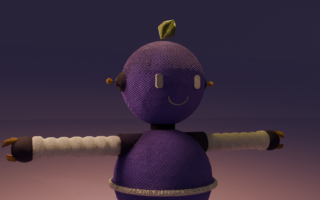In today’s world of cinema and digital entertainment, Visual Effects (VFX) have become an inseparable part of the production of films, video games and various other visual media. From epic space scenes to giant monsters and jaw-dropping explosions, VFX allows filmmakers to bring their imaginations to life and create worlds that would never be possible in real life. But behind this visual beauty lies a very complex and demanding creative and technical process.
In this article, we delve deeper into the secrets of visual effects, revealing the creative processes and technologies used to produce stunning visual effects. Discover how VFX professionals work behind the scenes, combining art and technology to create stunning visuals.
What are Visual Effects (VFX)?
Visual Effects or VFX is a set of techniques for creating or editing images that would not be possible through direct recording. This effect is often used to create scenes containing supernatural elements, animated characters, extreme natural phenomena, and imaginative science fiction worlds. VFX uses computers and special software to create images that appear very real, even though the images do not exist in the real world.
VFX differs from special effects (SFX), which are physical effects created on location, such as explosions or the use of miniatures. VFX, on the other hand, serves to perfect a scene in post-production or create a scene from scratch.
Creative Process in Making Visual Effects
1. Concept and Initial Planning
Before creating interesting visual effects, the most important first step is planning and ideas. This process requires close collaboration between the director, production designer, and VFX team to determine what needs to be added or changed to the shot to achieve the desired effect. This includes sketches, storyboards, and digital visualizations of the effects you want to add.
During this phase, the VFX team plans how to use available technology to create elements such as explosions, digital creatures, fantasy environments, and character transformations. All these plans provide clear guidelines for the entire production process.
2. Taking Pictures (Filming)
Even though VFX uses many digital techniques, live filming remains an important part of creating visual effects. The director and cameraman work together to ensure that the lighting, perspective and camera angles match the visual effects that will be used later.
In some cases, such as motion capture, actors wear special costumes equipped with sensors to capture their body movements, which are then transformed into digital characters in postproduction. This shot is important to ensure the visual effects blend perfectly with the original image.
3. Image Processing and Composition (Compositing)
Once the image is taken, the compositing process begins, where the VFX team combines both elements captured on set and those created digitally to create the final image. Create a new image. Make. . Use techniques like rotoscoping, keying, and layering to achieve a smooth, natural interaction of visual elements.
One example of this technique is the creation of environments, characters and objects that do not exist in the real world. For example, the film Avatar (2009) combines real-life actors playing the characters with a highly complex digital environment to create the colorful and realistic world of Pandora.
Technology Used in Visual Effects
1. Computer-Generated Imagery (CGI)
Computer-generated imagery (CGI) is at the heart of many of the visual effects seen in modern films. CGI technology makes it possible to digitally create three-dimensional images and animations, from static objects to complex moving scenes. For example, films like Jurassic Park and The Avengers use CGI to create very realistic looking dinosaurs and digital characters.
CGI is used to create digital objects and characters and to simulate natural effects such as explosions, dust, water, and lightning. Thanks to increasingly sophisticated rendering capabilities, filmmakers are able to create more realistic visual effects using CGI.
2. Motion Capture
Motion capture is a technology that uses sensors and cameras to record the movements of human bodies (often actors) and uses that data to animate digital characters. This technology allows for very realistic animation, as the movements of digital characters follow those of real people.
Films such as The Lord of the Rings (2001-2003), where the character Gollum was created using motion capture, show how effective this technology can be in creating realistic and dynamic characters.
3. Simulation and Particle Systems
Simulation and Particle Systems used to create more realistic natural effects such as smoke, fire, water, and dust. This system allows visual effects to be programmed to interact with other elements in the image, such as gravity and lighting, creating highly accurate and dynamic simulations.
In major films, this effect is used to create scenes such as large explosions, heavy rain, and sandstorms that can change the atmosphere of the entire film.
4. Artificial Intelligence (AI)
AI is now increasingly being used in the world of visual effects (VFX) to streamline the process of creating effects and animations. AI can also enable filmmakers to speed up the rendering process and automatically improve image quality or correct errors in existing images. For example, AI can be used to recognize movement patterns and edit images more efficiently, so that the VFX team can focus more on other creative aspects.
The Developing Visual Effects Trend
1. Real-Time VFX
Technological advancements have made it possible to implement VFX in real time. In film and video game production, technologies such as Unreal Engine allow visual effects to be applied during recording. This allows filmmakers to see visual effects in real time, increasing creativity and production efficiency.
2. Virtual Production dan LED Walls
Virtual production is a new approach to filmmaking that combines studio shots with digital backdrops displayed on large LED walls. This technology makes it easy to create dynamic backgrounds, such as space scenes or futuristic cities, that can be customized directly on set. One example of virtual production
the most famous of which is the TV series The Mandalorian, which uses a studio equipped with LED walls to create the expansive world featured in the story.
Conclusion
Visual Effect (VFX) has become an important part of the entertainment industry, from feature films to video games to mobile applications. A complex creative process and advanced technology work together to produce a truly immersive visual experience. With continued advancements in technologies like motion capture, real-time VFX, and AI, we can expect many innovations that will take the world of entertainment to the next level.
Technology is advancing rapidly, but behind-the-scenes processes still require creative collaboration and a high level of skill from VFX teams to produce perfect visual effects. The combination of art and science creates a truly memorable and unforgettable entertainment experience.
FAQ
1. What are Visual Effects (VFX)?
VFX is a technique used to create or modify images in film, television, and other media using computer technology.
2. What is the difference between VFX and SFX?
VFX (Visual Effects) relies on computer technology to create effects, while SFX (Special Effects) is more related to physical effects produced directly on the shooting location.
3. What is Motion Capture?
Motion capture is a technology that records human body movements and converts them into digital animation, allowing the creation of realistic animated characters.
4. How is AI used in VFX?
AI helps speed up the rendering process, improve image quality, and increase efficiency in the creation of visual effects, especially in image editing and processing.
5. What is Virtual Production?
Virtual production is an approach to filmmaking that uses LED walls large and digital backgrounds to create a dynamic virtual world during shooting.



